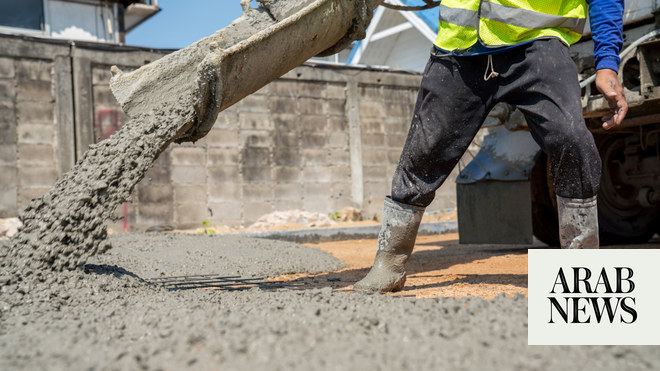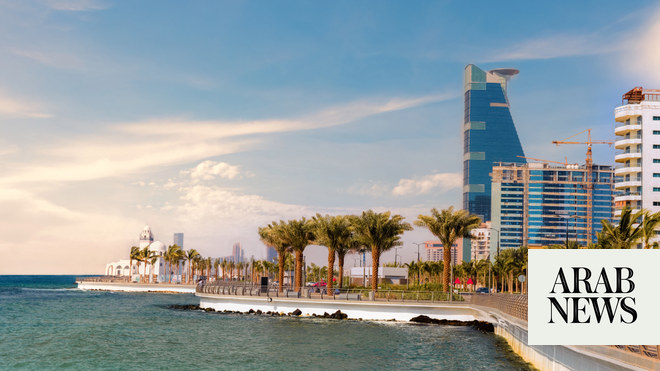
RIYADH: Saudi Arabia’s construction output value is projected to hit $181.5 billion by the end of 2028 — a 28 percent rise over five years, according to global property consultancy Knight Frank,
An analysis by the firm found that output value for the sector reached $141.5 billion in 2023 thanks to the Kingdom’s activities in the residential, institutional, and infrastructure sectors as well as industrial, energy, utilities, and commercial divisions.
This substantial investment in construction also serves to strengthen the Kingdom’s position as a global hub for tourism, commerce and trade.
This is further propelled by Saudi Arabia’s giga-projects – including the $500-billion-megacity NEOM – and goals to deliver over 660,000 residential units, more than 320,000 hotel keys, over 5.3 million sq. m. of retail space, and more than 6.1 million sq. m. of new office space by the end of the decade.
Mohamed Nabil, head of Project and Development Services for the Middle East and North Africa at Knight Frank, said: “We are currently witnessing a historical transformation unfolding in Saudi Arabia with construction projects standing out in their design scale and value.”
He added: “Given the scale of the development pipeline, the government is hoping to attract over $3 trillion in investments by 2030, a figure recently confirmed by the Minister of Investment during the inaugural Sino-Gulf Cooperation for Industries and Investments Forum in China last month.”
Since the launch of Saudi Arabia’s National Transformation Plan in 2016, deemed an integral part of Vision 2030, the total budgeted value of real estate and infrastructure projects has surpassed $1.25 trillion.
While this transformation is evident across the entire urban landscape, the residential division primarily dominates the sector’s output value, accounting for 31 percent, or $43.5 billion, of the total in 2023.
This is projected to reach $56.9 billion by the end of 2028, according to Knight Frank’s analysis.
This continued growth is largely driven by the nation’s flagship real estate developer, ROSHN, which aims to produce over 400,000 homes, 1,000 kindergartens and schools, and over 700 mosques by 2030.
The company has made strides to fulfill this goal, most recently in April, when it signed an SR215 million ($57.3 million) sale and purchase agreement with partner developer Dar Al Arkan.
Under the deal, Dar Al Arkan will acquire and develop residential villas in SEDRA 1A, which is in northern Riyadh.
Riyadh currently accounts for 38 percent of the existing contract award value, equating to $54 billion, followed by Makkah at $28.7 billion and Tabuk province at $28.5 billion.
While construction sector contract awards account for 61 percent of the total value, the transportation sphere follows in second place at 33 percent, highlighting the significant investment being made in bolstering the capital’s infrastructure as the population swells to a projected 10 million by 2030.
The under-construction Riyadh-based King Salman International Airport is a testament to this fact. According to the Public Investment Fund, the project, announced by Crown Prince Mohammed bin Salman in November 2022, is expected to cover an area of approximately 57 sq. km, allowing six parallel runways as well as the existing terminals.
The Knight Frank analysis comes as Saudi Arabia emerged as the leader in global construction activity for the first quarter of this year, according to a report released in May by real estate services firm JLL, which calculated the Kingdom having $1.5 trillion of projects in the pipeline,
The JLL analysis further highlighted that Saudi Arabia accounted for a 39 percent share of the total construction projects in the Middle East and North Africa region, valued at $3.9 trillion.
The economic diversification strategy Vision 2030 has been the driving force for much of this growth, especially through giga-projects across the Kingdom, particularly in the Western region.
Initiatives like NEOM, The Line, Diriyah Gate, and the newly announced Qiddiyah project are at the forefront of this boom.
Amar Hussain, associate partner for research at Knight Frank, said: “With a value of over SR1.25 trillion launched but not yet delivered, giga-projects are undoubtedly transforming the Kingdom’s urban landscape. Arguably, one of, if not the most expansive, real estate development programs ever seen in the world is gathering pace in Saudi Arabia as the 2030 deadline nears to realize Vision 2030.”
He added that across the Kingdom the planned volume of residential units has risen to 660,000, an increase of 30 percent in the last 12 months, while the office pipeline is steady at 6 million sq. m.
In the commercial market, according to the report, plans are currently underway for 5.3 million sq. m. of retail space and an additional 320,000 hotel rooms, which will contribute to Saudi Arabia’s objective of growing the population to 40 million and accommodating 150 million visitors by 2030.
“This figure has increased from approximately 106 million visitors last year, including 27 million international visitors, a 62 percent increase from the previous year,” said Hussain.
According to Knight Frank’s analysis, 25 giga-project-related developments are currently in various construction phases around the Kingdom.
Western Saudi Arabia remains a focus of development, with plans valued at $692 billion, accounting for 55 percent of the total $1.25 trillion expansion plan.
The region is expected to see extensive growth in luxury residential supply, hotel accommodation, retail, and office space.
This past year alone, under the umbrella of NEOM, a multitude of new assets were announced in the Western region, including luxury lifestyle destination Magna, situated on the Aqaba coastline, ultra-modern active lifestyle community Norlana, and eco-luxury sanctuary resort Zardun.












